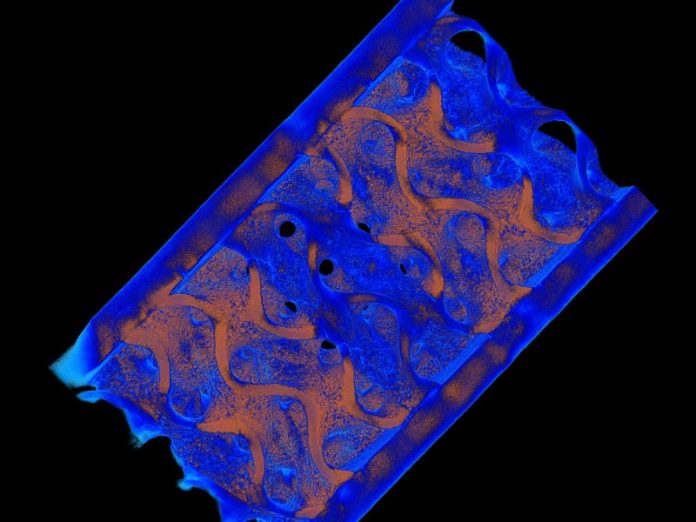
In a breakthrough that could change how we build everything from medical implants to heat exchangers, researchers at Penn State University have used 3D printing to combine two different metals into one complex structure—something that used to be possible only with welding.
The team used a process called multi-material laser powder bed fusion, an advanced form of 3D printing.
This method allows them to melt together different metal powders, layer by layer, to form one solid piece.
Using a newly added machine in Penn State’s Center for Innovative Materials Processing Through Direct Digital Deposition (CIMP-3D), they printed a part made from stainless steel and bronze—a mix of 90% copper and 10% tin.
Jacklyn Griffis, a mechanical engineering Ph.D. student and lead author of the study, explained that they were the first university in the U.S. to print two metals in a single layer using this technique.
The process uses very fine metal powders, similar in texture to flour, which are laid out with incredible precision.
A laser then melts the powders together to form the shape, one layer at a time. A part that’s just one centimeter tall includes thousands of these layers and takes a few hours to print.
To ensure the final parts are strong and defect-free, the team also uses advanced monitoring tools.
These include CT scans to look inside the part for tiny cracks, pores, or weak spots where the two metals meet.
This real-time checking helps the researchers fix problems during the printing process, not just after it’s finished.
One of the big challenges was understanding how the shape and position of the part during printing could affect its strength and quality.
The team printed their test piece in a shape called a “gyroid,” a very complex form often used in devices like heat exchangers and medical implants. Only this new printing method could build such a detailed multi-metal gyroid.
This development puts Penn State at the front of metal 3D printing research. According to Professor Guha Manogharan, who led the project, being able to print different metals exactly where needed opens the door to creating smarter, more efficient designs.
The next steps include testing other metal combinations, such as Inconel and copper, and refining the process for real-world use.
The team hopes this new method will lead to stronger, lighter, and more advanced parts—changing how we think about building with metal.



